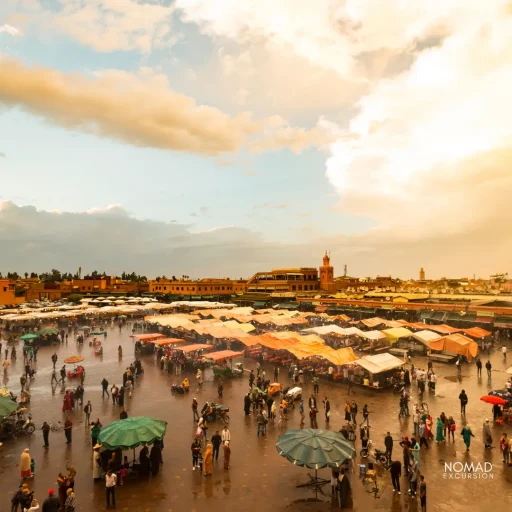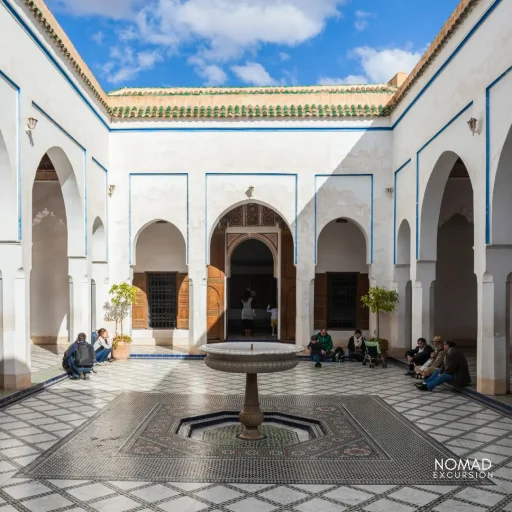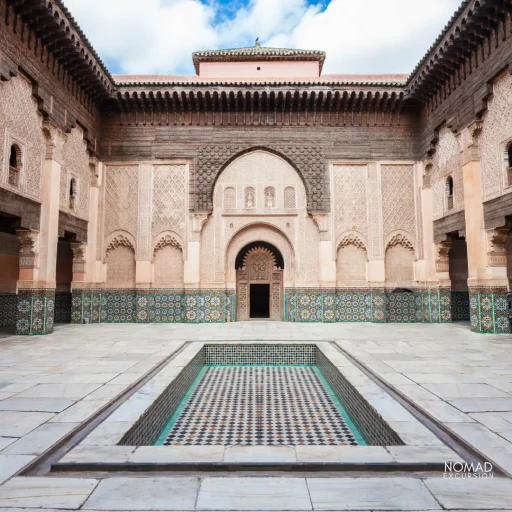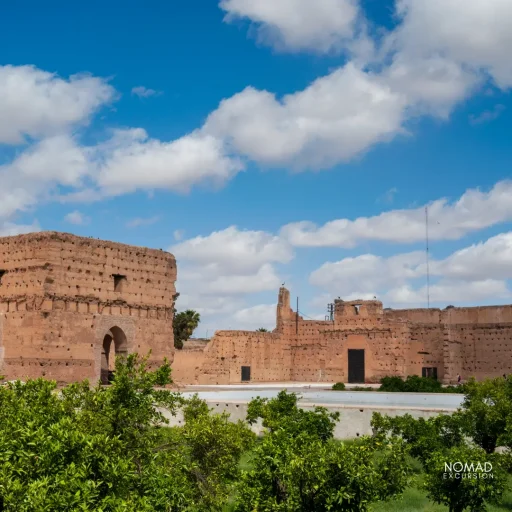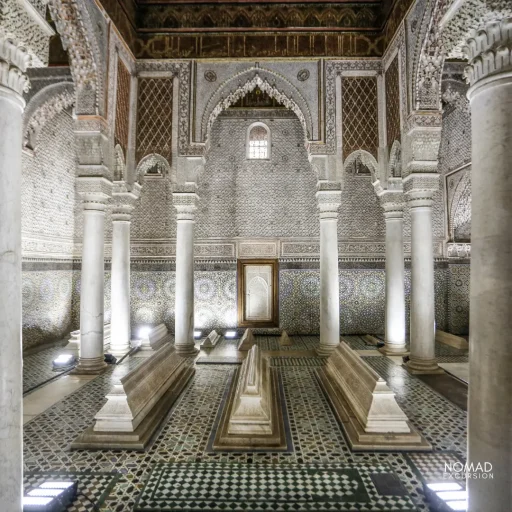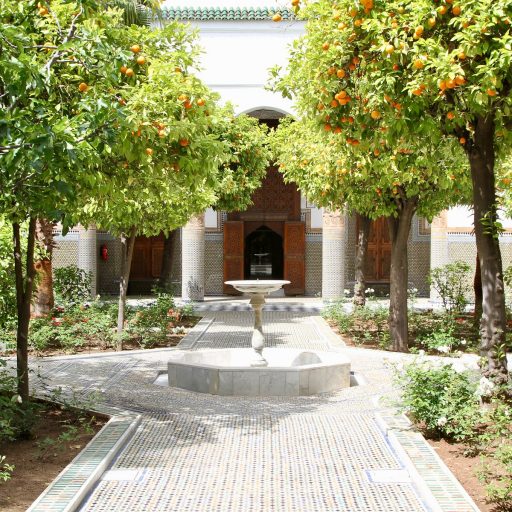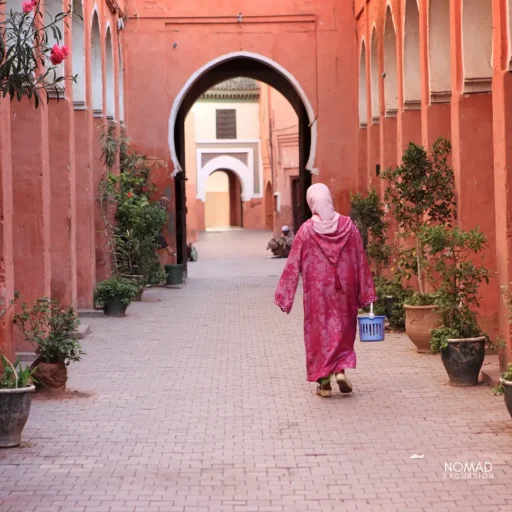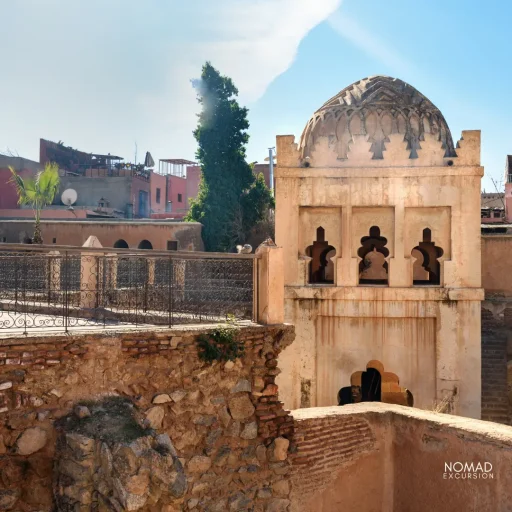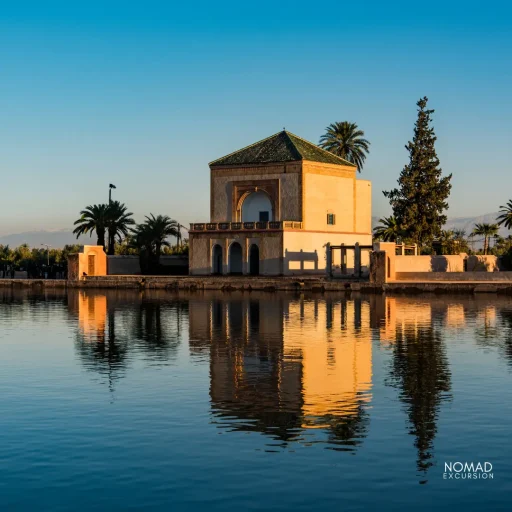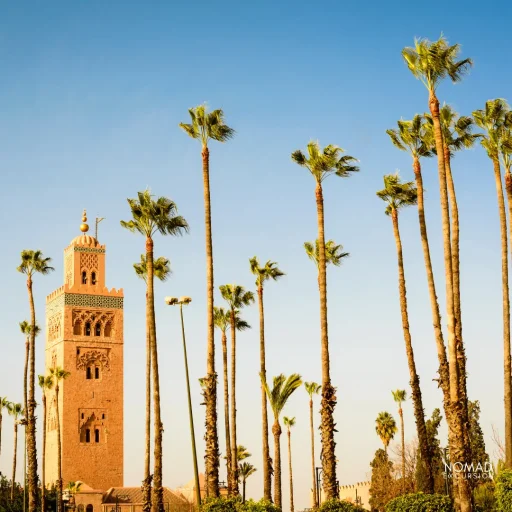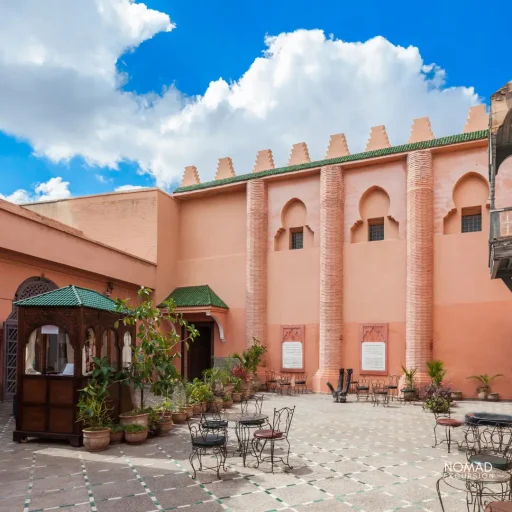History
of
Medersa Ben Youssef
Discover the rich history of Medersa Ben Youssef in Marrakech. Learn about its founding in the 14th century, architectural brilliance, and cultural significance. Visit this UNESCO World Heritage Site today!
A Jewel of Islamic Education in Marrakech
Medersa Ben Youssef, located in the heart of Marrakech, is one of the most significant historical landmarks in Morocco. This magnificent Islamic school, or madrasa, was built in the 14th century and has since become a symbol of the city’s rich cultural and educational heritage.
Founding and Early Years
The Medersa Ben Youssef was founded in the mid-14th century by the Marinid Sultan Abu Inan Faris. Named after the Almoravid Sultan Ali ibn Yusuf, under whose reign Marrakech flourished, the madrasa was initially built as a center for Islamic learning. It was the largest Islamic school in North Africa, attracting students from across the Muslim world to study theology, law, and the sciences.
Architectural Brilliance
The madrasa is renowned for its stunning architecture, which reflects the brilliance of Moroccan craftsmanship. The original structure featured intricate carvings, zellige tilework, and beautiful wooden ceilings. In the 16th century, Sultan Ahmad al-Mansur of the Saadian dynasty expanded the madrasa, adding a large courtyard surrounded by student dormitories and a minaret that enhanced the school’s prominence. The courtyard, with its central reflecting pool and ornate decorations, remains one of the most iconic features of the Medersa Ben Youssef.
A Place of Learning and Worship
Beyond its role as an educational institution, Medersa Ben Youssef also served as a place of worship and a library. Students would spend years studying the Quran and Islamic law, preparing for careers as scholars and judges. The madrasa’s mosque, which is integrated into the complex, provided a space for daily prayers and religious gatherings.
Decline and Restoration
By the 18th century, Medersa Ben Youssef had fallen into decline, largely due to the shifting political and economic fortunes of Marrakech. The school was eventually abandoned and left to deteriorate. However, in the late 19th century, the Alaouite Sultan Moulay Hassan I recognized the historical significance of the madrasa and initiated its restoration. The restored madrasa reopened as an Islamic school, preserving its legacy as a center of learning.
Medersa Ben Youssef Today
Today, Medersa Ben Youssef stands as a UNESCO World Heritage Site and one of Marrakech’s most visited attractions. Although it no longer functions as a school, the madrasa remains a testament to the city’s rich educational and architectural history. Visitors can explore the beautifully preserved courtyard, admire the intricate details of the student cells, and imagine the lives of the scholars who once studied within its walls.
Planifiez Votre Visite
The history of Medersa Ben Youssef is a story of education, architecture, and cultural preservation. From its founding in the 14th century to its restoration in the 19th century, the madrasa has played a vital role in the intellectual and religious life of Marrakech. Today, it continues to inspire visitors with its beauty and historical significance, serving as a reminder of Morocco’s rich heritage.
